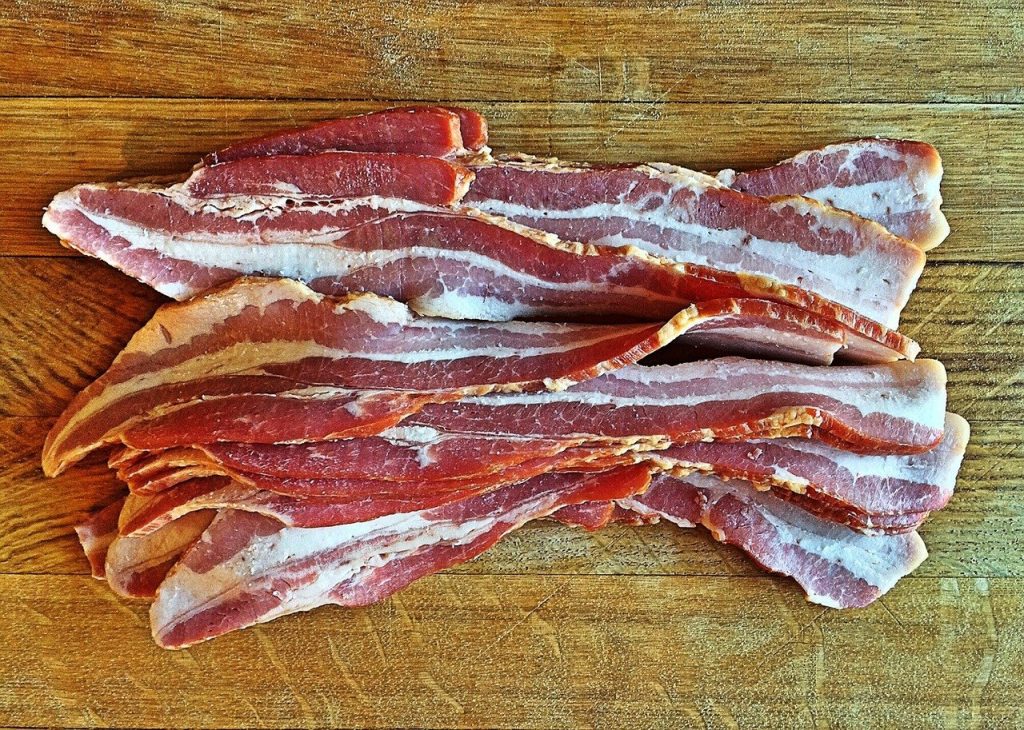
Bacon is one of the most favorite breakfast foods around the world. It goes well with sandwiches and other foods too. Because so many people love it, questions like “can you dehydrate bacon?” arise.
I think this is a great and valid query. This might come from the fact that there are many types of dehydrated foods being sold in the supermarket today.
So, can you dehydrate bacon? Yes, you can definitely dehydrate bacon using a dehydrator. Dehydrated bacon is a great food to take on an outdoor trip during summer. It occupies a smaller space in your storage box making it easy to pack.
Dehydrating bacon is also a great way to save space in your food storage at home. But the most important thing is that it makes the bacon last longer.
How Can You Dehydrate Bacon?
So far, you already have an idea that you can dehydrate bacon. But before diving into the process of doing it, I would like to share some things you need to remember before dehydrating bacon.
The first thing to consider is the fact that bacon becomes smaller in terms of volume and weight when dehydrated. This is due to the amount of moisture being eliminated.
The second thing is that before dehydrating it, make sure that you choose a higher-quality bacon. It will give you a better flavor.
Now, let’s dive into the process of dehydrating bacon.
Although the entire process is simple and quick, there are things you need to consider in order to yield a successful result.
Here are the things you need in dehydrating bacon:
The Right Equipment
The best equipment, in my opinion, you can use to dehydrate bacon is an electric dehydrator. Electric dehydrator does a very good job at removing the moisture from the meat.
One important thing to remember here is to cook the bacon first using a skillet in the oven or microwave.
Then, remove the extra grease by wrapping the bacon with a paper towel. Make sure that the extra visible fat is completely removed before it is placed in the dehydrator.
The main purpose behind this is to prevent the bacon from becoming rancid during the dehydrating process.
Once the bacon is ready, place it on the dehydrator’s tray and put it inside. Allow the machine to do its thing. The whole dehydrating process may take up to 6-8 hours.
Once completed, you can store the dehydrated bacon in an airtight container to make it last long.
Helpful Tips in Dehydrating Bacon
There are many types of food dehydrators you can choose from. And each of those offers varying functionalities you can take advantage of.
If the machine is new, make sure that you read all the instructions and reminders. This will give you a better idea on how to use it properly.
For instance, if the dehydrator has mesh trays, use them to dehydrate the bacon. Simply place the bacon on them and place them in the drying rack. It will help to further drain the fat from the bacon.
Another thing to consider is adding some flavors to the bacon. If that is what you want, then you can have additional flavors by adding some onion powder, maple syrup, and pepper.
Can You Dehydrate Cooked Bacon?
The other question that I also got in relation with “can you dehydrate bacon?” is whether or not cooked bacon can also be dehydrated.
So, can you dehydrate cooked bacon? Yes, you can dehydrate cooked bacon. It is a great way to preserve the leftovers or to give longer shelf life to the bacon. Cooked bacon is easy to dehydrate and only requires minimal effort.
Dehydrating cooked bacon and fresh bacon share the same simple steps. As mentioned earlier, bacon should be cooked first before dehydrating it. So if you have cooked bacon, the time it requires the whole process will be shorter.
In other words, you can use and apply the steps above. The process and steps it involves is the same.
In my opinion, dehydrating cooked bacon especially the leftovers will give you more accessible food for camping and other outdoor activities.
How Long Will Dehydrated Bacon Last?
As mentioned, dehydrating bacon will give it longer shelf life. If done right, the dehydrated bacon can last for about 1-2 years.
The shelf life of dehydrated food is largely dependent on the way it is being stored. In this case, the dehydrated bacon should be stored in an airtight container.
This way the bacon can be edible for a long period of time as long the container is sealed.
Final Thought
Can you dehydrate bacon? You can absolutely dehydrate bacon. All you need to do is to use the right equipment and apply the right steps.
That said, I recommend an electric dehydrator. This will give you the best result.
Another thing to remember is that before dehydrating the bacon, cook it first and soak up the excess fats using a paper towel.
You can add some flavor to it if you want. Then, dehydrate the cooked bacon for about 6-8 hours.
When done, store it in an airtight container. It can last up to 1-2 years as long as the container is properly sealed. I hope this helps. Thank you for reading.

